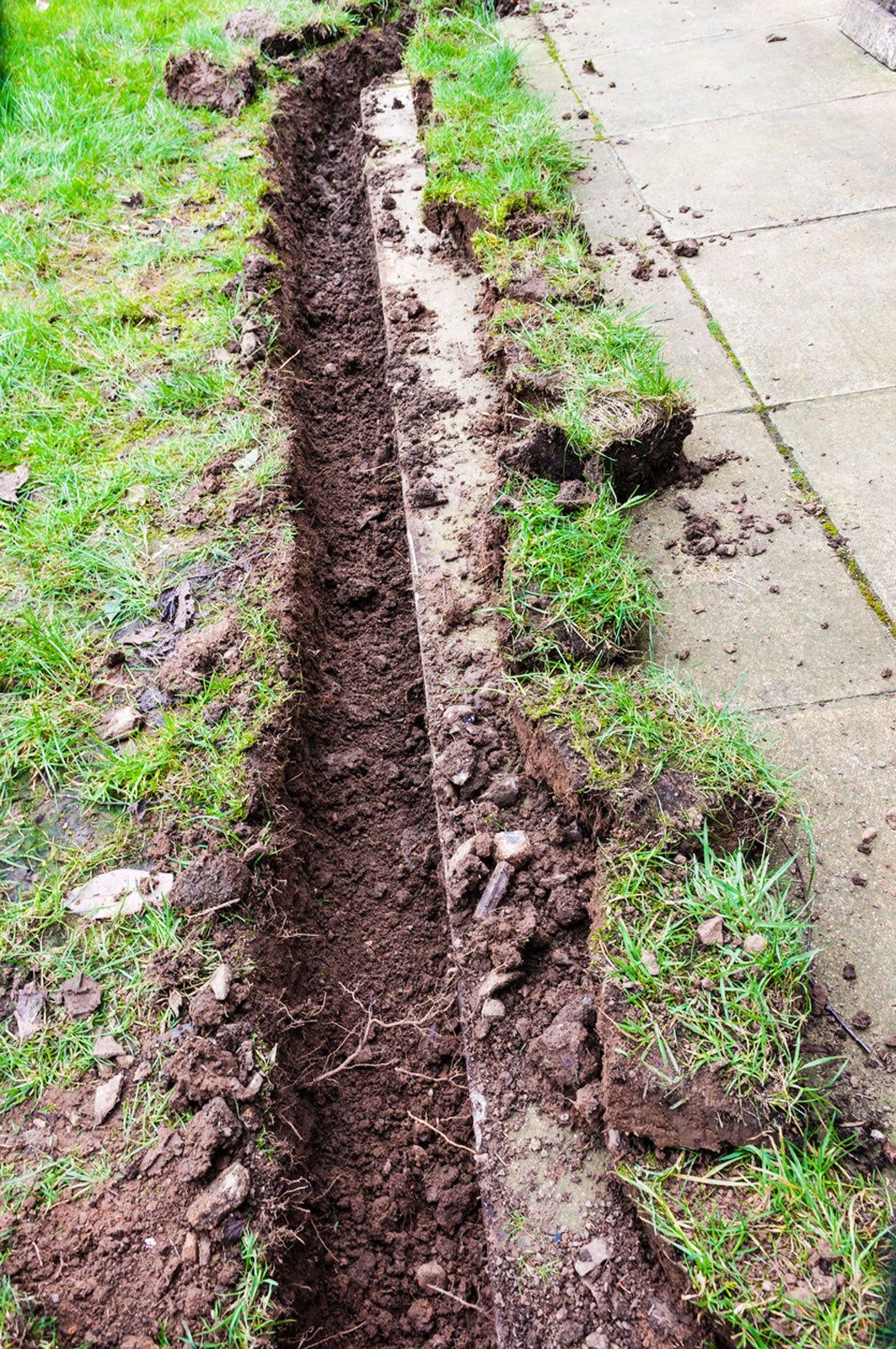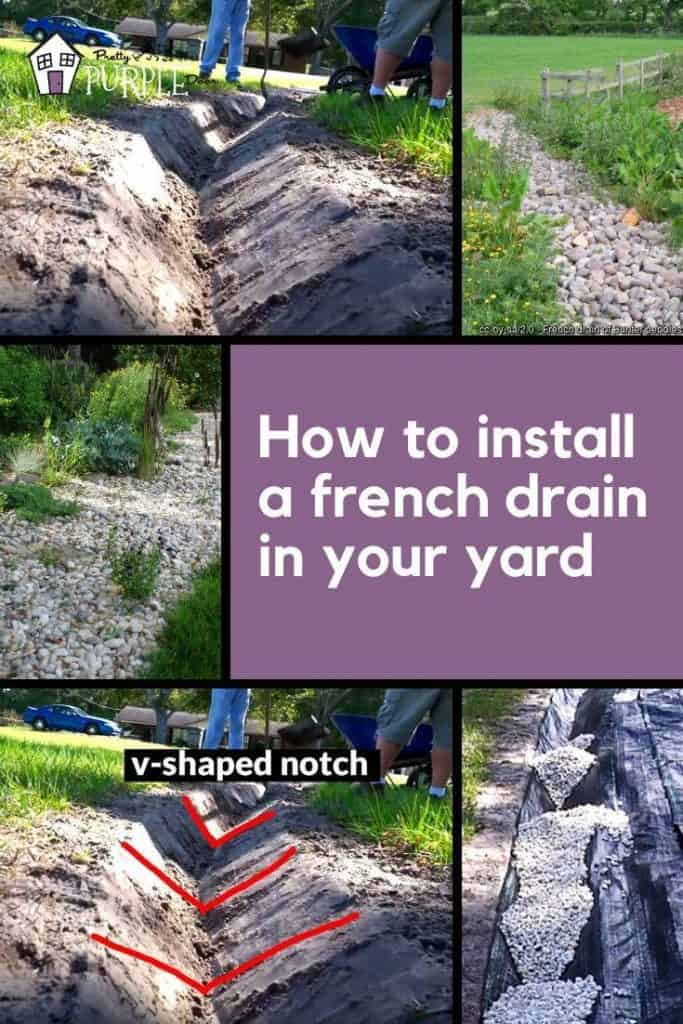Complete Guide About the Portland French Drain System
Complete Guide About the Portland French Drain System
Blog Article
The Crucial Overview to Preserving Your French Drain for Lasting Efficiency
Preserving your French drain is crucial to its effectiveness and your property's security. Routine checks can save you from costly repair work and water damages. You'll wish to know what indications to seek and just how typically to check your system. Plus, recognizing the cleaning process can make a considerable distinction. Allow's explore the essential steps for guaranteeing your drainpipe functions well for several years to come.
Recognizing the Feature of a French Drainpipe
A French drainpipe is a vital element in handling water around your home. It routes excess water away from your structure, stopping flooding and damages. When hefty rainfall drops, the drain collects water with a perforated pipeline buried in crushed rock. This system allows water to stream openly, reducing pressure on your basement walls and reducing the threat of leaks.You could wonder exactly how it functions in practice. As water saturates the dirt, gravity pulls it toward the drainpipe. The perforated pipe records this water, carrying it to a designated water drainage area or storm drain. This process keeps your backyard dry and protects your home's structural integrity.Understanding exactly how a French drainpipe features is essential to valuing its relevance. By effectively funneling water away, it helps keep a safe and dry living environment. Maintaining your French drain in top condition assurances you avoid costly repair services down the line.
Routine Inspections: What to Look For
When you're checking your French drain, start by looking for any type of obstructions that could be blocking water circulation. Take note of signs of surface erosion around the drain, as this can show possible problems. Regular analyses will help maintain your drainage system working successfully.
Clogged Drainpipe Analysis
Just how can you tell if your French drainpipe is clogged? Watch for water pooling in your backyard, particularly after hefty rainfall. That's a red flag if you discover locations where water accumulates rather of draining pipes. You must likewise examine the drain outlet; if water isn't streaming out as it should, there's most likely a clog. Listen for uncommon gurgling sounds, which can indicate trapped air. In addition, inspect the drain's surface for any kind of plants development, as roots can clog the system and penetrate. Lastly, if you smell moldy odors, it can indicate stagnant water brought on by a clog. Regularly assessing these signs can assist you keep your French drain successfully and protect against costly repair services.
Surface Disintegration Check

Cleaning Your French Drainpipe: Step-by-Step Guide
Cleaning your French drain is vital for keeping it functioning properly. You'll need some certain tools and a clear process to assure whatever runs efficiently. Allow's stroll with the steps and ideas for keeping your drain successfully.
Devices You'll Need
To take on the task of cleaning your French drainpipe effectively, you'll wish to collect a couple of vital tools. First, get hold of a durable pair of handwear covers to secure your hands from particles and sharp items. A little shovel or trowel will aid you remove dirt or blockages around the drainpipe. For removing out the interior, a plumber's snake or a high-pressure water nozzle can be incredibly beneficial. You'll also require a pail for collecting any debris you draw out. Finally, having a yard hose pipe handy will make it simpler to rinse out the drain and ensure it's moving smoothly. With these tools all set, you'll be established for a detailed cleansing session!
Cleaning Refine Steps
Start by assessing the area around your French drain for any noticeable particles or blockages. Remove leaves, branches, or dust that might obstruct water circulation. Next off, check the inlet and outlet locations; clear any type of blockages to ensure correct water drainage. Make use of a yard pipe to flush the drainpipe, directing water right into the inlet. This helps remove any kind of built up sludge or sediment. If you see persistent clogs, think about making use of a plumber's serpent to break them up. After cleaning, examine the crushed rock around the drain; renew it if it's cleaned away. Verify the drain covers are undamaged and securely in place to avoid particles from getting in. Routine cleaning keeps your French drain operating efficiently.
Upkeep Regularity Tips
While routine maintenance is essential for your French drain's longevity, knowing exactly how often to preserve it can make all the difference. Preferably, you must evaluate your French drainpipe at the very least twice a year, preferably in spring and fall. After hefty rains or snowmelt, check for obstructions or particles. If you observe any standing water, Discover More Here it's time to cleanse your drain.In areas with hefty vegetation, more regular maintenance-- concerning every three months-- might be needed. Furthermore, think about cleansing your French drainpipe after major tornados or if you observe water pooling in your lawn. By staying positive, you'll ensure your French drainpipe features successfully and safeguards your home from water damage. Routine checks will certainly conserve you money and time in the future.
Identifying Common Issues and Their Solutions
When you observe water merging in your lawn or damp spots in your cellar, it's crucial to recognize usual problems with your French drainpipe and carry out efficient services. One regular issue is clogging, commonly brought on by debris like fallen leaves or debris. To fix this, you can utilize a pipes serpent or a high-pressure water jet to clear blockages.Another concern may be improper slope. Water will not flow away from your home if your drain isn't sloped properly. You can adjust the slope by excavating and repositioning the drainpipe pipe.Lastly, check for damages or fractures in the drain itself. Changing the harmed areas is important for peak efficiency if you discover any. By attending to these concerns immediately, you'll aid assure that your French drain remains to work effectively, shielding your building from water damages and preserving a completely dry, safe atmosphere.
Seasonal Upkeep Tips for Your French Drainpipe
Attending to common problems with your French drainpipe is just the initial step in ensuring its long-lasting effectiveness. Seasonal maintenance is essential for peak efficiency. In the springtime, clear away leaves and particles that might have collected throughout winter. Look for any type of blockages in the outlet or capture basin, as water requires a clear path to stream freely.During summertime, evaluate your drain for any type of indications of resolving or moving dirt. Make specific it's still level and working effectively. As fall strategies, clean any dropped leaves to stop obstructions before winter arrives.In wintertime, look for freezing temperature levels. Make sure your drain isn't at danger of cold if you live in a cold climate. Shielding exposed pipes can help. Regular checks and timely maintenance can protect against costly repair services and keep your French drainpipe functioning efficiently year-round. Stay aggressive and enjoy assurance understanding your drainage system remains in great form!
When to Contact a Professional
When to call in an expert can save you time and prevent further damages to your French drain, knowing. It's a clear indication that your drain might be blocked or harmed if you discover relentless standing water in your backyard. Do not disregard odd smells, as they can suggest sewage backup or degeneration, which requires prompt attention.If you find that your drain isn't functioning properly after efforts to clean or preserve it, it's time to connect for professional assistance. Additionally, if you're unclear about the underlying concerns or lack the needed devices, working with an expert can give peace view it of mind.Finally, if your French drainpipe is old or has actually experienced considerable damage, expert evaluation can figure out whether repair services or full substitute is needed. Depend on the experts to ensure your water drainage system works efficiently for many years to find.
Tips for Protecting Against Future Water Drainage Troubles
To keep your French drain functioning successfully, routinely inspecting and maintaining it can make all the distinction. Beginning by getting rid of particles, leaves, and dust from the surface area and drain openings. This stops obstructions that can bring about water backup. Check the crushed rock around the drainpipe; if it's compressed or deteriorated, consider including fresh crushed rock to keep excellent flow.Next, divert water away from your drain by ensuring downspouts and seamless gutters are clear and directing water a minimum of 3 feet far from your foundation. Regularly check why not try here for any signs of damage or drooping. If you see issues, address them immediately.Finally, take into consideration installing a catch or a filter basin to catch bigger debris prior to it gets in the drain. By remaining proactive with these tips, you'll reduce the risk of future water drainage troubles and keep your French drainpipe in top form.
Regularly Asked Concerns
For how long Does a French Drain Generally Last?
A French drain commonly lasts around 30 to 40 years, relying on the materials used and upkeep (Portland French Drain). If you keep up with routine checks, you can prolong its life-span even additionally
Can I Set Up a French Drainpipe Myself?
Yes, you can mount a French drain on your own if you have actually obtained the right devices and understanding. Simply ensure to prepare meticulously, comply with local guidelines, and guarantee correct water drainage to stay clear of future problems.
What Products Are Utilized in a French Drainpipe?
You'll need perforated pipe, gravel, landscape material, and a solid drainage pipeline for your French drain. These materials aid reroute water efficiently, stopping flooding and maintaining your property risk-free and dry from water damage.

Is a License Required to Mount a French Drainpipe?
You'll likely need a permit to mount a French drainpipe, relying on local guidelines. Get in touch with your municipality to assure you adhere to any type of required guidelines and stay clear of prospective problems throughout setup.
What Are the Prices Associated With French Drainpipe Upkeep?
Maintaining a French drain normally sets you back between $100 and $500 every year. You'll need to take right into account expenditures for cleansing, repairs, and evaluations. Regular upkeep assists stop larger assurances and expenditures your system functions properly for many years - Portland French Drain. When you're evaluating your French drainpipe, begin by checking for any clogs that might be obstructing water circulation. By remaining aggressive, you'll assure your French drainpipe functions efficiently and protects your residential or commercial property from water damage. When you observe water pooling in your lawn or damp spots in your cellar, it's essential to determine usual concerns with your French drain and execute effective solutions. You can readjust the slope by excavating and repositioning the drainpipe pipe.Lastly, check for damage or splits in the drainpipe itself. Check the crushed rock around the drain; if it's compressed or eroded, consider including fresh crushed rock to maintain excellent flow.Next, draw away water away from your drainpipe by making sure downspouts and gutters are clear and guiding water at the very least 3 feet away from your structure
Report this page